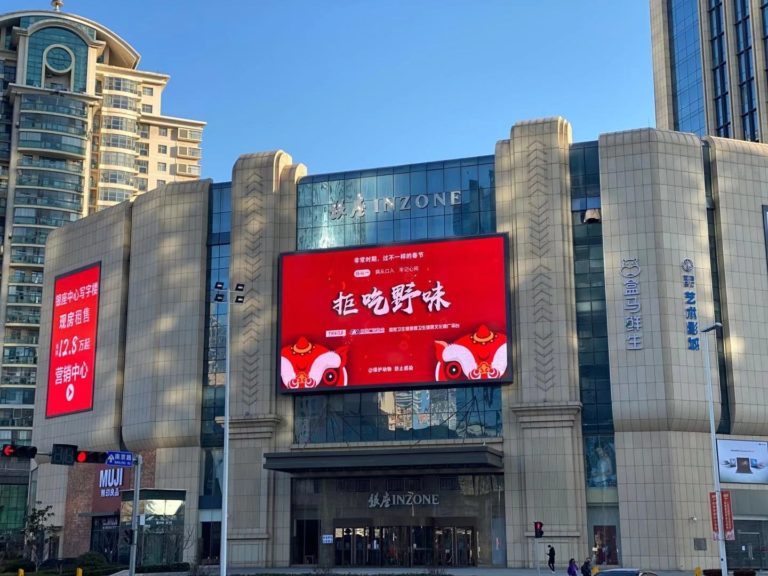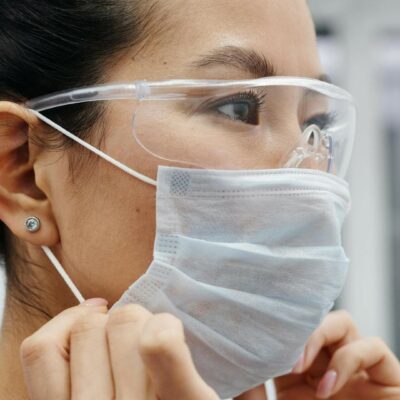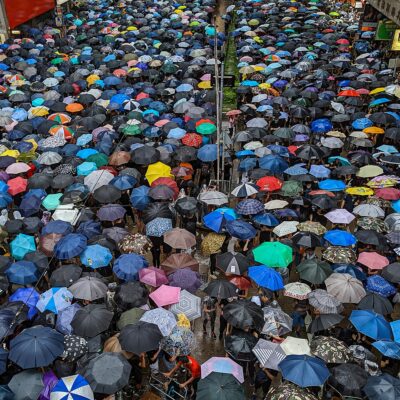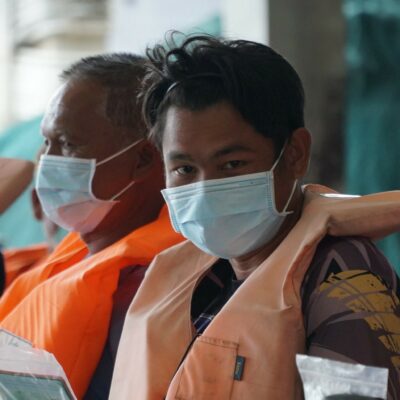Since the outbreak of COVID-19, there’s been an avalanche of misunderstanding in the West about China’s ‘wet markets’ and their links to the pandemic and the illegal wildlife trade, leading to racially and politically motivated moral judgements of the Chinese.
From 23 January 2020, Wuhan, the first epicentre of the novel coronavirus COVID-19 was under full lockdown and as a result all businesses were shut. On 8 April the lockdown was lifted and businesses were reopened, including ‘wet markets’.
Just after the lockdown in Wuhan was lifted, a letter signed by a group of over 60 U.S. Senators and other representatives calling for China and other countries to permanently shut down ‘wet’ markets, was sent to the World Health Organisation (WHO), the World Organisation for Animal Health, and the Food and Agriculture Organization of the United Nations. The letter stated that ‘Live wildlife markets, known as “wet” markets, were linked to the 2003 SARS outbreak and are believed to be the source of the current COVID-19’.
The conflated use of live wildlife markets (where wild animals are sold for human consumption, some of which are legal and some illegal) and ‘wet markets’ (food outlets including fresh produce markets) has caused a gross misunderstanding of wet markets and diverted the focus away from the wildlife trade. Wuhan has reopened its food outlets including produce markets and supermarkets, but the West has mistakenly taken this as reopening of live wildlife markets.
China’s wet markets: the facts
The English term ‘wet markets’ originated in Singapore. It is derived from fresh produce markets’ wet floors caused by the melting of ice used for chilling and storing seafood; and by stall vendors who routinely spray their stalls and fresh food with water. The term came into common usage in Singaporean English in the early 1970s when the Singapore government used the term to differentiate these traditional markets from air-conditioned ‘supermarkets’ that had become increasingly popular with the opening of Fitzpatrick’s supermarket in Orchard Rad in 1958.
Since then in English, ‘wet markets’ has become the term used to refer to the traditional produce markets across Asia which offer a wide range of fresh meat, fruit and vegetables at affordable prices, as opposed to supermarkets – the other major form of food outlet – which were introduced into Asian societies later. In 2016, the phrase ‘wet market’ was added to the Oxford Dictionary.
Within China, traditional fresh produce markets are called ‘nongmao shichang’ or ‘cai shichang’ (literally, farmers markets/produce markets) in official documents, and ‘caichang’ (literally, produce markets) in everyday Mandarin. In Hong Kong Cantonese, they are called ‘jieshi’ (literally, street-side markets) and in Guangzhou Cantonese, they are called ‘shichang’ (literally, markets).
The 1980s and 1990s witnessed blossoming of food markets throughout China after the end of the Mao-era (1949-1976) food rationing and communal agriculture. Supermarkets began operating in the 1980s. The first supermarket in Beijing was opened in 1984 offering pre-packaged vegetables, and farm and sideline products. The packaging, however, had made the prices less competitive. Within a year, the supermarket lost 230,000 RMB (approx.AUD$40,000). But the idea of being able to walk around, pick up one’s own groceries and pay for them at a single counter was quickly embraced by Chinese consumers, and small supermarkets in Shanghai, Guangzhou and other cities were opened. The first Chinese supermarket chain, Wumart, was opened in 1994 and it remains one of the largest supermarket chains in China.
Along with the development of supermarkets, in 1985 the Chinese government invested in a ‘wicker basket project’ (cai lanzi gongcheng); that is, establishing a traditional fresh produce market (nongmao shichang) up to 1,000 square metres in size per 20,000-30,000 head of population. Over time many of these wet markets evolved into private management.
While these wet markets play an important economic and social role across China, for decades the Chinese government has been trying to ‘modernise’ them. Since 2002, due to population growth and the demand for more efficient use of land, the Chinese government has been implementing the ‘Transformation of Wet Market into Food Supermarket’ (nong gai chao) program to turn the traditional fresh food retail system into a more modern and efficient supermarket mode of retail.
Progress, however, has been painfully slow. This is due to a number of reasons: the high cost of transformation (estimates indicate that a 1000-square metre supermarket would need millions of RMB for remodelling and infrastructure configuration alone), difficulties securing the suppliers from the original market for the supermarket, and the elevated price of the produce due to the transformation. From the consumers’ perspective, the results of a survey in three large Chinese cities indicate that freshness, accessibility, and whether buyers can haggle are the three main factors in consumers’ favouring wet markets over supermarkets.
A survey of 1200 households in Nanjing shows that while supermarkets are the top source for purchasing staple grains, dairy products and processed foods, wet markets still prevail for purchasing fresh produce and meat.
Traditionally poultry vendors would sell and slaughter live chickens and ducks at wet markets. But since the first outbreak of Avian influenza H7N9 in 2013, many Chinese cities including Wuhan have moved to close live bird markets. By 17 February 2017 after the 5th epidemic of H7N9, Wuhan completely banned live bird markets in all 445 wet markets across the city. The only live animals allowed since then are fish, a wet market manager in Wuhan informs me. On 13 April 2020 the Wuhan Municipal Government issued an announcement to standandise the layout and facilities of all the 397 wet markets bigger than 600 square metres in size across the city and the standardisation is to be completed by the end of May. The announcement states that the Wuhan government will further encourage suitable wet markets to be transformed into supermarkets.
Huanan Seafood Wholesale Market, the market in Wuhan associated with the earliest cases of COVID-19, occupies an area of 50,000 square metres and is not an average wet market. It has both wholesale and retail businesses and owns over 600 stores, eight of which have a wildlife trade licence to purchase and sell live wild animals. The market was ordered to close its doors on 1 January 2020 and at the time of publication remained closed.
Since the outbreak of COVID-19, many within China have expressed concerns about the number of wet markets like Huanan across the nation and asked whether wet markets are still necessary in China, given the rise of various forms of food outlet such as supermarkets, convenience stores and e-commerce for fresh produce.
However, given the consumers’ great reliance on wet markets for fresh food (73%) and complexity in wet market ownership (some are stated-owned and some are privately-owned) the Chinese government has never entertained the idea of totally shutting down wet markets.
Double mistranslations of Chinese wet markets in the midst of COVID-19
The conflation of live wildlife markets and fresh produce markets used by Western media and politicians also appeared in an influential formal Paper on Wildlife Markets and COVID-19 published by Humane Society International in April 2020.
Although the White Paper has mostly used the term ‘wildlife markets’, while quoting a survey conducted on rural residents in Southern China the paper referred to ‘wet [wildlife] markets’. Although the survey being quoted did not provide the original questionnaire in Chinese (hence the ambiguity), given the context it is highly unlikely that the author of the survey meant ‘wet markets’ to mean ‘wildlife markets’ as the author was comparing live animals sold at wet markets with meat from a supermarket.
The mistranslation of wet markets to mean wildlife markets was then used by the Chinese media to suit its own political agenda. The Global Times, the daily tabloid newspaper under the Chinese Communist Party’s People’s Daily, while praising CNN’s clarification of what wet markets are, accused the West of utilising misunderstanding of the term to demonise China. The Global Times also back-translated ‘wet markets’ into ‘live bird markets’ in Chinese and accused Australia of blindly following the US in spreading misinformation about China’s live wildlife markets, after Australia’s Prime Minister Scott Morrison berated the WHO’s support of China’s ‘wet markets’.
The stigmatisation of Chinese wet markets did not begin with COVID-19. Anthropologist Christos Lynteris has discovered that Euro-American guidebooks have long represented Chinese ‘wet markets’ as bizarre, oriental sites filled with exotic wild animals. Lynteris argues that in the wake of a zoonotic spillover during the SARS period, the photographic representations of wet markets in East Asia and China in particular, in these guidebooks have constructed an imaginary scene of the existence of wet markets and the next pandemic. When wet markets are compared with supermarkets, they are often described as being cluttered, dirty and disorganised. Even in the Chinese government’s own wet market transformation project, the move to supermarkets is framed as a one of better hygiene, freshness, efficiency and modernity.

The illegal wildlife trade is an on-going problem
A thorough study of wildlife crimes in China shows that both consumers and suppliers involved in the illegal wildlife trade are aware of the illegality of their actions but reveal limited concerns over risks of breaking the law as they are rarely penalised. On 24 February 2020 the Chinese government passed a Legislative Decision to ban all consumption of terrestrial wildlife, whether they lived in their natural environment or on farms. This is a welcome step forward to banning wildlife trade for human consumption, but it does not ban the farming and trade of wildlife for other commercial purposes such as fur and Chinese medicine. A recent survey conducted by Peking University Centre for Environmental Protection and Social Development and other organisations of over 100,000 Chinese citizens shows that 97% of the respondents do not agree with consuming terrestrial wild animals. Billboards and signs reminding the public to stop consuming wild animals are ubiquitous across China.
Despite the ban of and education campaigns against wildlife consumption, wildlife trade remains a problem and poses potential threat to public health. It is, however, a significant mistake to confuse wildlife trade with fresh produce markets, which play a vital role in the food chain for the Chinese people. Cross-cultural mistranslation and misunderstanding can turn misconstrued facts into fallacies which may easily lead to international conflicts.




